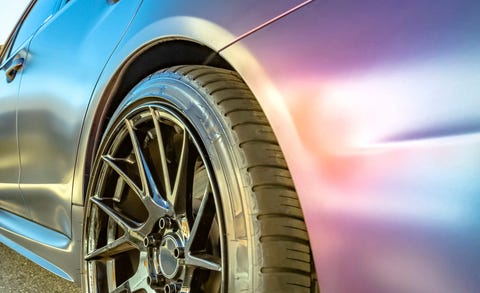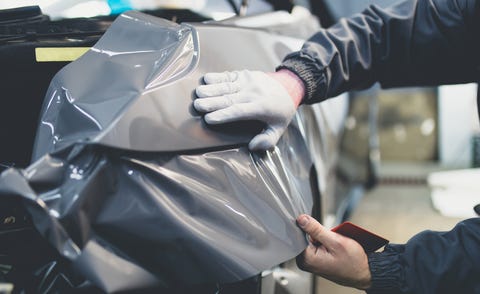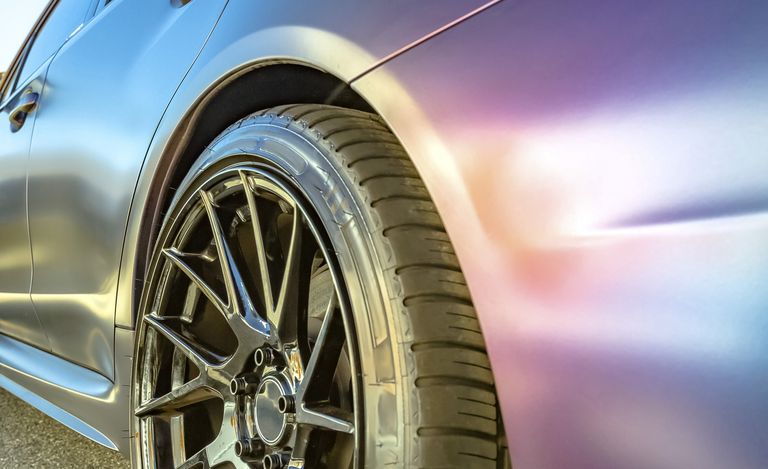How Much Does It Cost to Wrap a Car in Sydney or Brisbane?
People have been personalizing and customizing their cars for, well, as long as there have been cars—and one of the newest and coolest ways is with vinyl wrapping. If you’re already thinking about how your vehicle will be transformed when you shrink-wrap it in an entirely new color, then the next step is understanding what that might cost—and whether the price is worth it.
That’s where we can help. Vinyl wraps have some distinct advantages over repainting your vehicle, and also a couple of disadvantages worth considering. Here’s what you need to know about wrapping your car—including how much it costs.
Colors and Options
A car wrap consists of several huge vinyl decals that are applied to every panel of your car—the hood, doors, fenders, roof, decklid, and bumper covers. A wrap covers every square inch of the body. None of your vehicle’s original color will show anywhere on the outside. In that sense, a wrap acts just like a paint job.
If applied correctly and maintained properly, a wrap won’t damage or alter your car’s paint and can even protect it. It can also be customized. Like paint, there are various colors and glossy and matte finishes. There are also chrome and metallic color options. But because wraps are designed using a computer program, you can also choose from a seemingly infinite number of graphics and designs to give your car a distinct style. Want your ride to look like it’s made out of carbon fiber? No problem.

Not only do wraps offer a wider array of possibilities than paint, they can be quickly and easily removed—you essentially just peel them off—and they allow you to apply graphics or unique paint colors and combinations that might otherwise be hard to create. For companies that want to place advertisements or a business logo on the car, a wrap is an easy way to do that, and it’s removable when you want to replace the vehicle. A wrap is especially smart if you’re leasing a car, as leases often have restrictions and high charges for any alterations to the stock condition you received the car in.
Wraps can be applied to a strategic part of the car, like the hood or doors, or to the whole exterior. Clear wraps are virtually invisible, and many owners apply them to the front ends of their cars to protect them from stone chips. We had a clear protective film on the nose of our Porsche Boxster S long-term vehicle, and it was inconspicuous.

Vehicle Condition
The condition of your car will affect the performance and success of the wrap. Scratches, dents, and dings will stick out, just as they would if you tried to paint over them without repairing them first. Corrosion or chipped paint may hinder the vinyl decals from properly sticking. Some shops will not apply a wrap or will not warranty or guarantee their work if your car’s paint is peeling or suffers from visible oxidation. Applied to a poor surface, a wrap often won’t last as long as it would otherwise. If your car’s paint is in optimum condition, figure that a vinyl wrap will keep looking its best for about four to five years, depending on the climate and exposure to the elements. It also becomes harder to remove after that length of time.
Application Process

Before your car can be wrapped, the paint surface has to be as clean and smooth as possible. The process can take several days and generally begins with a thorough wash and detailing and might even include a power washing. This will help the vinyl decals adhere better.
Once the car is clean, a shop may remove the bumper covers, headlights, and taillights in order to wrap the vinyl covering around edges and into the car’s crevasses. The wrap can also be applied without removing those panels, but it may result in a better application if the shop takes the extra time to remove those components in order to work around the difficult areas.

While applying the material, a shop may use a heat gun to work the vinyl. More advanced wraps and graphics may require several layers. The final steps are checking for air bubbles and imperfections and smoothing out the wrap.
Wrap Price Ranges
Prices vary drastically, based on the size of your car, the complexity of the wrap, and how much labor is required. For example, it’s hard to remove the front and rear bumper covers on certain cars. Especially curvaceous bodies or sharply creased panels may require more work than smooth, flat ones. As a general rule, a two-door sports coupe will be cheaper to cover than a similar-size four-door sedan.
Car wraps can start as low as $2500 for a small two-door, such as a Fiat 500. A larger coupe, like a Chevy Camaro or a Ford Mustang, and smaller SUVS, trucks, and vans start at around $4500. Treatments such as a carbon-fiber-look vinyl add more, and expect to pay extra for chrome treatments, which start at about $8000 and go up from there. The most exotic wrap jobs can go as high as $15000 or more, depending on the difficulty, the materials, and the size of the vehicle. Wrapping inside the doorjambs, for instance, can take an additional two days or more, which adds substantial time and, thus, cost.
Care Requirements

Where you live can affect how much care you need to take of a wrapped vehicle. High temperatures and baking sun can break down the wrap over time. Ideally, a wrapped car is parked under the cover of a garage or at least is protected from the elements with a car cover. Cold-weather states present challenges as well. Salt used on roads in snowy areas is hard on vinyl. If a wrap has been applied professionally and you don’t live in a harsh environment, it can last four or five years.
Changing or removing a wrap is generally an easy process. It can cost $600 but can be significantly more if the wrap has fused to the paint surface, in which case it won’t easily peel off.
If applied correctly, a vehicle wrap can act as a big, protective cover and help maintain your car’s paint condition. With a variety of colors, treatments, and graphics on offer, you can find seemingly endless design options that can give your ride a unique look.

